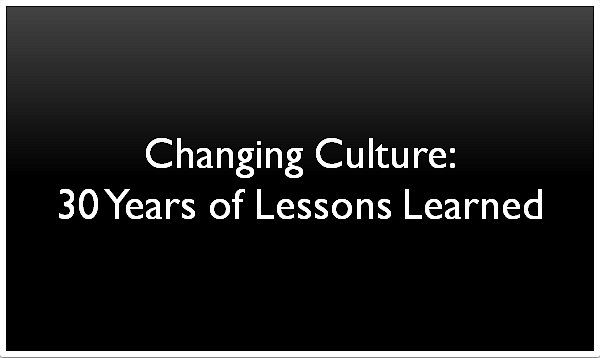
Culture Benchmarks: A Dangerous Practice
Culture Benchmarks: A Dangerous Practice
The Seductive Appeal of Industry Benchmarks
There are numerous famous examples of companies learning from their competitors, such as Toyota adapting and improving on General Motor’s manufacturing processes. This is benchmarking at work. According to C.E. Bogan & M.J. English, Benchmarking For Best Practices: Winning Through Innovative Adaptation the objective is to identify “best practices that produce superior performance when adapted and implemented in one’s organization”.
This is accomplished by using “a continuous process of measuring products, services and practices against the toughest competitors or those competitors recognized as industry leaders”. It has diverse applications ranging from measures of human competence and capability (high versus low performers) to work processes (i.e., sales and manufacturing), and even organizational culture.
These measures, when used in quantitative studies, take the form of statistics commonly referred to as benchmarks. With respect to culture, benchmarks are used to compare an organization’s scores on a set of cultural attributes or characteristics to those of others within the same industry.
The argument is that organizations achieving scores at or above the industry benchmark can expect to achieve a higher level of performance than those below the benchmark. In reality, there are only three good reasons to use industry benchmarks and these have, at best, an indirect link to improved performance.
#1 Constraints on Culture Change
An organization’s culture is influenced by the assumptions and norms of its industry. This is due to the fact that organizations tend to emulate others with whom they have substantial contact and who they perceive as highly effective. Industry norms are also a product of basic market requirements which are influenced by competitive dynamics, customer and societal expectations.
This operates as a form of cultural control and constraint in that organizational survival depends on the ability to function in a manner that is consistent with these expectations. For example, organizations in a highly regulated sector such as financial services and pharmaceuticals must meet rigorous reporting and compliance requirements. This affects their culture and is evident in a strong orientation towards normative (emphasis on policies, procedures etc.) practices.
Any organization that does not have sufficient emphasis on this in their culture is likely to experience consequences that negatively affect their performance.
It is important to note that ‘sufficient emphasis’ is not necessarily the same thing as achieving or exceeding an industry benchmark. One of the challenges with industry-specific cultural characteristics is they can be overdeveloped and, due to the systemic nature of culture, impede other important attributes. For example, an organization with a ‘normative’ culture typically invests significant resources documenting, monitoring and reporting on compliance activities. When effective, these practices help the organization meet its regulatory, fiduciary and/or legislated obligations.
At the same time, they cannot interfere with the ability to execute strategy and achieve performance goals. This requires that the organization finds the right balance of cultural characteristics, such as pragmatism versus normative practices, people versus task orientation and high versus low-risk orientation, to allow it to deliver on its strategy.
#2 Competitive Differentiation
Benchmarks can help leaders discover how similar or different the culture of their organization is vis-à-vis others in the industry. This is not, however, about identifying gaps so actions can be taken that would serve to make the culture the same as others in its industry. Instead, a benchmark gap analysis can be helpful in providing a starting point for a deeper exploration of an organization’s culture and its potential as a source of competitive advantage.
Meaningful insights that inform action can be gained by asking questions such as, why are we different from others in our industry? How is our culture supporting or getting in the way of strategy execution? How can we leverage our culture to stand out in the marketplace? What values, beliefs and assumptions are core to our culture?
#3 Learn New Cultural Practices
While benchmark metrics are not useful for this purpose, a third reason to use benchmarking practices is to learn from other organizations. This can reveal insights into the ways other organizations, within and outside the industry, intentionally shape and change a culture.
An example of this includes learning about an admired (or not) organization’s strengths and specifically the network of behaviors, practices, structures (i.e., systems, processes, reporting relationships etc.), physical artefacts and so on that work together to bring its values and beliefs to life.
It can also include culture change strategies and techniques, which borrow from traditional change management but are different in important ways. Regardless, the objective is to learn and grow culture design and change capability by acquiring new insights and knowledge.
There is much more to culture and benchmarking than this. In our next post, we will discuss some more of the problems with industry benchmarks. If you have any questions about what Culture-Strategy Fit can do for you, contact us today.









